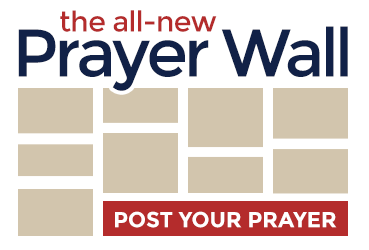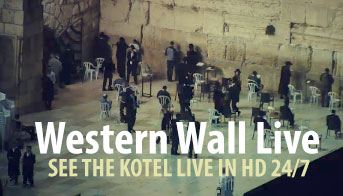
Every autumn, the Jewish people observe the High Holy Days. These are the most sacred and solemn of all the days on the Jewish calendar. This period begins with the Jewish New Year—Rosh Hashanah, the Feast of Trumpets.
Rosh Hashanah (literally the “head of the year”) marked the start of ten days of repentance in preparation for Yom Kippur, the Day of Atonement. These two feasts were unlike the first four festivals of the spring and summer. Those were designated as days devoted to individual introspection. They were not the joyful festivals of celebration; they were days of intense selfexamination. It was as sober an event as that of a guilty man standing before a judge begging for his life.
[caption id="attachment_2964" align="alignright" width="260"] And the LORD spoke to Moses, saying: “Also the tenth day of this seventh month shall be the Day of Atonement. It shall be a holy convocation for you; you shall afflict your souls, and offer an offering made by fire to the LORD. And you shall do no work on that same day, for it is the Day of Atonement, to make atonement for you before the LORD your God.” — Leviticus 23:26-28[/caption]
And the LORD spoke to Moses, saying: “Also the tenth day of this seventh month shall be the Day of Atonement. It shall be a holy convocation for you; you shall afflict your souls, and offer an offering made by fire to the LORD. And you shall do no work on that same day, for it is the Day of Atonement, to make atonement for you before the LORD your God.” — Leviticus 23:26-28[/caption]In Leviticus 23, the Israelites were charged to hold a “holy convocation.” On that day they were to blow a blast on the trumpets. It was a call to prepare to stand before God in judgment. It was a call to repent before the arrival of the Day of Atonement. Many Bible scholars believe the Feast of Trumpets is a picture of the Rapture of the Church—the moment when Christ comes for His Bride.
The Apostle Paul wrote, “For the Lord Himself will descend from heaven with a shout, with the voice of an archangel, and with the trumpet of God. And the dead in Christ will rise first. Then we who are alive and remain shall be caught up together with them in the clouds to meet the Lord in the air. And thus we shall always be with the Lord. Therefore comfort one another with these words” (1 Thessalonians 4:16-18).
The Day of Atonement was a day of national mourning and repentance. It was set aside as a special sabbath day. No work could be done, and those who ignored this dictate were cut off from Israel—a symbol of eternal damnation. Yom Kippur was a day of humility, mourning, and fasting. On the Day of Atonement, the priest laid aside his colorful robes and his jeweled vestments. He dressed instead in linen garments of white to symbolize his utter lowliness in the presence of God. He took on the garb of a slave to stand before the King of Kings in His holy sanctuary. It is reminiscent of Jesus in John 13 when He laid aside His robes and took on the role of slave to minister to His disciples.
On the Day of Atonement, the high priest actually offered two sacrifices. The first one was a young bull whose blood was sprinkled on the mercy seat of the Ark of the Covenant for the sins of the high priest and his family. Before he could make atonement for the sins of the people, he would kill a bullock, enter the Holy of Holies, and sanctify himself. The heart of the high priest had to be fully right with God so that he could survive close exposure to the presence of the Spirit of God.
The Ark of the Covenant
[caption id="attachment_2965" align="alignright" width="377"] Joshua passing the River Jordan with the Ark of the Covenant by Benjamin West, 1800[/caption]
Joshua passing the River Jordan with the Ark of the Covenant by Benjamin West, 1800[/caption]“And they shall make an ark of acacia wood; two and a half cubits shall be its length, a cubit and a half its width, and a cubit and a half its height. And you shall overlay it with pure gold, inside and out you shall overlay it, and shall make on it a molding of gold all around. You shall cast four rings of gold for it, and put them in its four corners; two rings shall be on one side, and two rings on the other side. And you shall make poles of acacia wood, and overlay them with gold. You shall put the poles into the rings on the sides of the ark, that the ark may be carried by them. The poles shall be in the rings of the ark; they shall not be taken from it. And you shall put into the ark the Testimony which I will give you.” —Exodus 25:10-16
God gave Moses very specific instructions concerning the construction of a sacred piece of furniture that would be the very center of Jewish worship. The ark was approximately four feet long by two and half feet wide, made of wood and completely covered in gold. On top of the ark, two winged angels were made of gold, and they rested over a solid slab of gold that was known as the Mercy Seat. This was the place where the high priest would sprinkle the blood of both sacrifices on the Day of Atonement.
Inside the ark, God commanded Moses to put the stone tablets on which the Ten Commandments were written. They also placed a pot filled with manna in the ark as a reminder of God’s miracle power and meeting of their needs. The final object placed inside the ark was the rod that Aaron had carried which miraculously budded even though it was a dead stick. These items were never seen by the people, but their presence was a powerful testimony to them.
Through the years, the ark would represent the presence of God—a visible reminder of God’s direction and provision for His Chosen People. When the Israelites traveled, it would be carried by a group of Levites, though they were not allowed to touch it. Instead, poles were placed through gold rings on each corner so that the ark could be carried without human hands coming in contact with it. It was so sacred and holy that merely touching it would bring instant death. Second Samuel 6 records the death of Uzzah who was killed when he stretched out his hand to keep the ark from falling off the cart that was being used to bring the ark back from the Philistines.
The ark remained in the Tabernacle until the Temple was built in the days of Solomon. When Solomon dedicated the Temple, the presence of God entered the building, and the ark continued to be the center of the solemn ceremony of the Day of Atonement. Neither the Bible nor history record the ultimate fate of the ark. Some believe that it was taken to Babylon when Nebuchadnezzar sacked the city of Jerusalem and looted the other treasures from the Temple. Others believe that it was hidden away and will one day be found.
The Scapegoat
[caption id="attachment_2966" align="alignright" width="260"] The Scapegoat by William Holman Hunt, 1854.[/caption]
The Scapegoat by William Holman Hunt, 1854.[/caption]“He shall take the two goats and present them before the LORD at the door of the tabernacle of meeting. Then Aaron shall cast lots for the two goats: one lot for the LORD and the other lot for the scapegoat. And Aaron shall bring the goat on which the LORD’s lot fell, and offer it as a sin offering. But the goat on which the lot fell to be the scapegoat shall be presented alive before the LORD, to make atonement upon it, and to let it go as the scapegoat into the wilderness.”
“And when he has made an end of atoning for the Holy Place, the tabernacle of meeting, and the altar, he shall bring the live goat. Aaron shall lay both his hands on the head of the live goat, confess over it all the iniquities of the children of Israel, and all their transgressions, concerning all their sins, putting them on the head of the goat, and shall send it away into the wilderness by the hand of a suitable man. The goat shall bear on itself all their iniquities to an uninhabited land; and he shall release the goat in the wilderness.” —Leviticus 16:7-10, 20-22
After the high priest completed the ritual of atonement for himself, he went back outside to offer the sacrifice for the sins of the people. The selected goat was killed, and he took the blood back into the Holy of Holies and sprinkled it on the Mercy Seat. The second goat was part of one of the most unique ceremonies described in Scripture. The sins of the people were symbolically placed on its head, and it was taken out into the wilderness—a sign that the sins had been removed.
This is such a powerful picture of the wonderful promise of God’s forgiveness. David wrote, “He has not dealt with us according to our sins, Nor punished us according to our iniquities. For as the heavens are high above the earth, So great is His mercy toward those who fear Him; As far as the east is from the west, So far has He removed our transgressions from us” (Psalm 103:10-12).
The scapegoat made such a dramatic impact on the hearts and minds of people—not only the Israelites but those who heard and read the story in later years—that it remains part of the common language, even though the ceremony has not been carried out for thousands of years. The concept of the need for someone to take the responsibility for our wrongdoing away from us was a spiritual truth long before it was a management technique.
Once the scapegoat was taken away, the high priest would lay aside the linen robe he had donned and take a ceremonial bath before putting back on his normal elaborate garb. This symbolized that the work of atonement had been completed for another year, and that God had accepted the sacrifice made for the sins of the people.
The great English preacher Charles Spurgeon had this to say about the impact of the atonement: “Beloved, let us go into our houses with joy; let us go into our gates with praise. The atonement is finished; the High Priest is gone within the vail; salvation is now complete. He has laid aside the linen garments, and he stands before you with his breastplate, and his mitre, and his embroidered vest, in all his glory. Hear how he rejoices over us, for he hath redeemed his people, and ransomed them out of the hands of his enemies. Come, let us go home with the High Priest; let us clap our hands with joy, for he liveth, he liveth; the atonement is accepted, and we are accepted too; the scapegoat is gone, our sins are gone with it. Let us then go to our houses with thankfulness, and let us come up to his gates with praise, for he hath loved his people, he hath blessed his children, and given unto us a day of atonement, and a day of acceptance, and a year of jubilee.”






